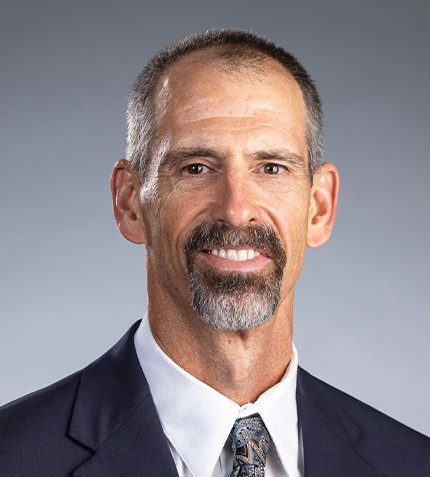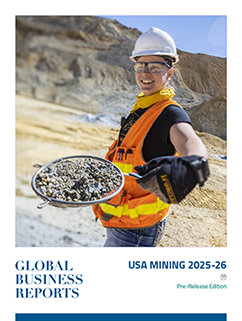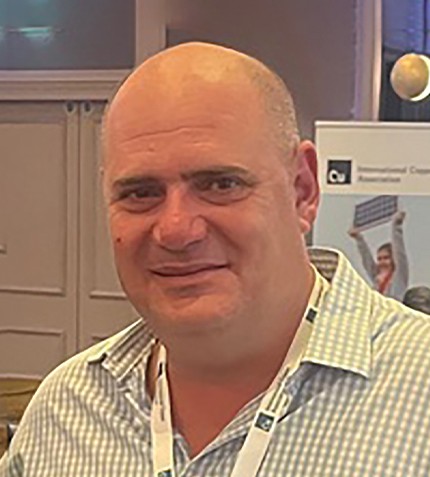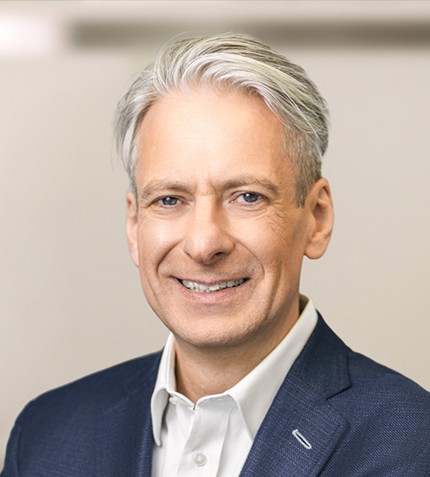
"We are progressing at our Bagdad mine in Arizona what we call the 2X Project – essentially doubling concentrator capacity, enabling us to increase copper production by 200 to 250 million lb/y."
RELATED PUBLICATION
Joshua Olmsted
PRESIDENT AND COO – AMERICAS, FREEPORT-MCMORAN
How is Freeport-McMoRan positioned for the second half of 2025?
We had a solid 2024 and started 2025 with a strong first half, meeting our production guidance. Sales volumes stayed positive, unit net cash costs also were solid, and we expect even better performance on the cost side in the second half. About a third of Freeport's production comes from the US, so we benefited from stronger copper prices, especially in the US, where the gap between LME and COMEX pricing worked in our favor, giving us a temporary boost.
What are the key pillars of Freeport-McMoRan's growth strategy in the US?
Leaching is our best near-term growth opportunity, which we have been working on for the last three years. We are currently producing around 200 to 250 million lb/y of copper – something we would not have achieved without this effort. We are on track to reach a 300 million lb/y run rate by the end of 2025 or early 2026. To achieve this rate, our technical team has been doing great work by leveraging AI, data analytics, and even developing new additives that could improve recovery. One of those additives is heading into pilot-scale testing soon and it could be a game changer. We are excited about what the next few years will bring as we work toward an 800 million lb/y copper goal through leaching.
On the medium to long-term side, we are progressing at our Bagdad mine in Arizona what we call the 2X Project – essentially doubling concentrator capacity, enabling us to increase copper production by 200 to 250 million lb/y. Engineering is nearly completed, and we are getting closer to being ready to make a decision, depending on market conditions. The estimated CapEx is in the range of US$3.5 billion. In the meantime, we are implementing key enablers, including the transition to an autonomous haulage fleet, which we expect to complete by year-end. We also are building a new tailings facility that we’ll need even without an expansion.
Also, within this medium- to long-term view is Lone Star in the Safford District, also in Arizona, where we are working through a Pre-Feasibility Study in 2025 and expect to have it completed by year-end. The resource there is massive, so we are focusing on determining the best plant design and scope to unlock its full value.
How do policy shifts impact Freeport-McMoRan's strategy in the US?
We do not build our strategy around any one administration. Projects like ours take years to come to life. You cannot base billion-dollar decisions on short-term political cycles. Incentives might help in the near-term, but we invest based on long-term fundamentals and what is right for our business.
What we are evaluating now is smelting capacity. Our Miami smelter can handle most of our US concentrate, but if the Bagdad 2X Project moves forward and we add more volume, we will either need to export that concentrate or look at ways to expand processing.
How do ESG values show up in the way you operate?
ESG has been a fundamental part of who we are and being a good neighbor has always been part of our values, not just a response to outside pressure. We have been part of the ICMM since the very beginning and all of our operating sites are certified under Copper Mark.
What will be Freeport-McMoRan's priorities for the next years?
I always say our operating plans are our ticket to the game: if we do not deliver on those, nothing else moves forward. As such, we are staying focused on improving efficiency, driving down costs, and making sure the projects we have committed to are progressing on schedule. Another area we are leaning into is capturing value through innovation. Technology is moving fast, while the mining industry has not always been quick to adopt new technology. However, we cannot afford to keep doing things the way we always have, especially in the US, where we are dealing with lower grades, long hauls, and higher costs from operating legacy assets.
Finally, we are focusing on building future optionality, meaning continuing to move studies forward at Bagdad, Safford and Lone Star, and at our El Abra mine in Chile.











